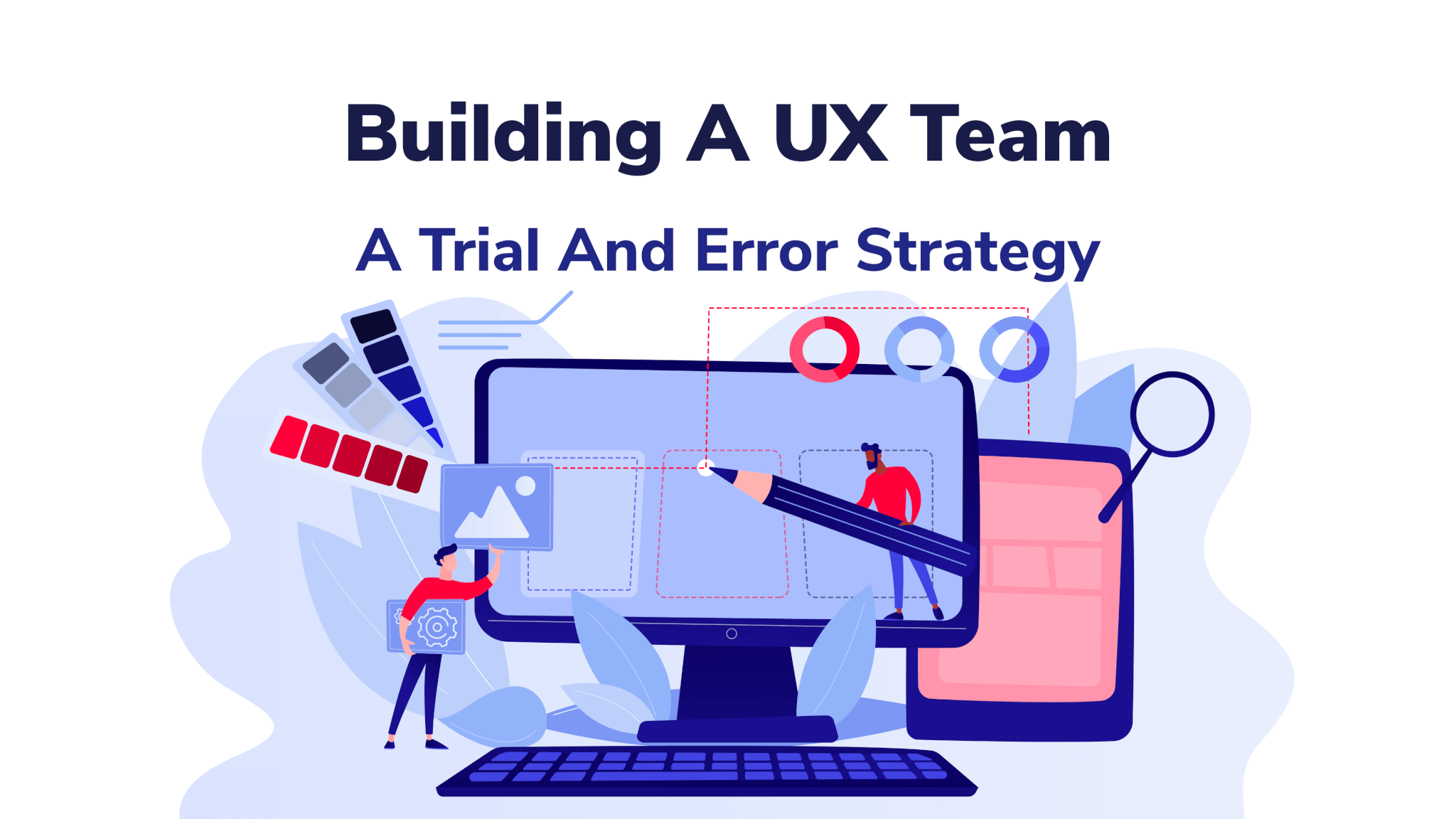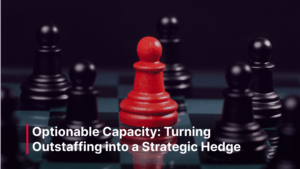Building a UX team has hidden pitfalls and it is a crossover of emotional, technical, and business elements. In this article, I’m sharing some interesting insights on how you can create a sustainable and cohesive design team through the simple principle of trial & error.
This article is based on my presentation at the Product Camp 2021 conference and was divided into 8 key points when it comes to building a UX team.
- THE PROBLEM
- THE PRINCIPLE
- THE SOLUTION
- THE CORE VALUE
- THE STRATEGY
- THE PROCESS
- THE PEOPLE
- THE CONCLUSION
The Problem
In any environment whether is an enterprise, startup, or consultancy agency there are cultural, marketing, and product constraints, and we, UX/Product designers, feel them to the fullest. This is because in many companies UX design is still an ambiguous field, with multiple expectations and definitions from stakeholders. Over all this, if you add in some bad politics, you have a perfect recipe for a status quo to kill creativity.
The Principle
One of the people who inspire me the most in terms of processes and business thinking is Elon Musk and especially his work at SpaceX, so I allowed myself to borrowed and adopt this philosophy from him:
In order to achieve unconventional goals you can’t think conventionally, you have to have courage, experiment and maybe most importantly, because you can’t do it alone, to create an environment in which people have the freedom to use their creativity, to experiment by minimizing the fear of failure as much as possible.
The above image illustrates very well the objective and the strategy applied to fulfill Musk’s vision to reach and populate the planet Mars, by building a Starship 2.0 rocket that can carry a large tonnage and be stable, reliable, and reusable. Falcon 1’s first launch took place on 24 March 2006 and since then, through a lot of iterations, trials & errors, data collections, feedback from Dragon astronauts, the recent Inspiration 4 mission, etc. they are constantly improving their engines, systems the design.
On top of all this, through this iterative approach, they managed to drastically reduce the costs of launching a rocket into space. If between 1970 and 2000 the average cost was US$18,500 per kilogram (with space shuttle having a cost of $54,500 per kilogram), SpaceX Falcon 9, the rocket used to access the ISS, the cost was just $2,720 per kilogram.
The Solution
You know how they say in business, make the money work for you, not the other way around. The same idea can be adapted when talking about the UX process (or any process for that matter). Create a process that works for you and your environment, and build it in small loops or Minimal Viable Increments, instead of being guided by a big process done by someone else in a totally different environment, solving other problems than the ones you face.
More about the power of a circular design mindset, MVPs & systems I explained in this video: The Power of Circular Design Mindset! MVP, systems & more…
The Core Value
Building a UX department or a UX team it’s not an easy thing to do as you can imagine and maybe also experienced. There are a lot of things to think of from processes, workflows, hiring, managing people, evaluations, mentoring, tools, collaboration, stakeholders, upper management, budgets, and so on… But what I’ve learned over time is that leadership doesn’t mean that you’re the boss and in charge of everything. It means that you are in charge of offering people opportunities to grow, to be accountable for their decisions, to help them learn from failures, to work with passion, to have the feeling of fulfillment, and to contribute on their own initiative without being forced to do so.
Without becoming annoying by constantly repeating these things in our meetings we’ve created a set of core values which we use as review points in our quarterly or yearly evaluation. This way, whether you are the evaluator or the evaluated one, by constantly going through these core values they are grounded in everyone’s mind, creating a spirit of unity and good conduct in the team. Coming up with these core values was, as you can guess, an iterative process. Here is a small workshop that you can use to determine the team’s core values.
The Strategy
We’re not driving on the road unless we know where we’re going. Or at least in most cases. When we go on vacation for example we need to plan things ahead, make the luggage, make a budget, buy tickets… and so on, so we can relax and enjoy the vacation and also come back home safely.
But at the same time, you can’t plan everything down to the smallest details because it may get frustrating and possibly forget essential things like… your passport. While on vacation you can see a nice fancy and expensive restaurant and go eat there, you can see a certain activity like bungee jumping and go for it. You may get pneumonia on the first day at the sea and have injections throughout your stay (been there, done that ?). So there is always the element of unpredictability.
So How Do We Deal With Unpredictability?
The answer is simple. We don’t. Not at least from the start. When planing or building a strategy we should always focus on things that are in our control at that given moment. And prioritize those elements. Use the Pareto principle and identify that 20% that make things work rather than the rest of 80% that can be irrelevant.
In my research for creating the UX team’s strategy, I found a good design ops structure on NNgroup website and also the Design Ops Handbook from Invision. After aligning with our company’s objectives our structure at Bytex came out like this:

The Process
When it comes to the process, I’ll use an example from the previous company that I worked for for 8 and a half years, where I had the opportunity to participate in the transition from a waterfall process to Agile. We had trainers coming in to teach us all about Agile methodology and how to implement it in the company. At the end of one training session, I asked the trainer: What about UX? The answer was: What about it? … and remained an open-ended, unanswered question.
Focus On The Experience
However, understanding how Agile works was a big thing for me and opened up a whole new range of possibilities, even if at that time, around 2014–2015, there were not many pieces of information on the internet about how to include a UX process in an agile environment. So together with my manager at the time, we started a long experimentation process. How to fit the UX process in 2 weeks sprints? After a while, we reached a certain workflow based on the Lean Startup methodology that afterward, we learned someone called it Lean UX.
Discovery and Delivery
But we still had a problem. The work on the design was almost never completed by the start of the dev sprint. And we said what if we create our own 2-week sprint that goes in parallel with the dev sprint but we design what will be implemented after 1 or 2 or even 3 dev sprints. Of course, we later found out that this approach was called Dual Track Agile.
Including The Entire Team
Around 2016 I read an article about a 5 days process with 2 days of workshop in which you can involve people from any department to explore different solutions and decide on one, and even test that solution through a prototype with real users (or people from sales or professional services when we couldn’t reach end-users for security/political reasons). Of course, I’m talking about design sprints.
So we started to include workshops in the discovery track. The first ones were a mess, mostly because none of us had experience with facilitation and handling people, but in three years of constant iterations and application, we managed to master the process and use it all the time when we started a new big feature. And everyone loved it, including developers.
Needless to say that including this type of exercise in an agile workflow already had a name, more precisely Design Spike.
The People
Like I previously suggested, a good leader is mirrored in team performance. So fortunately for me when I moved to my current job at Bytex with the purpose of building a UX team I already knew that people must come first, before the client, before the business, before any role name. And through my experience of facilitating workshops and interacting with different personalities, I learned that listening and understanding each one’s perspective is the key.
So based on that in the last 2 years I’ve always encouraged the team members to get involved, to speak, to listen, to give feedback, to be honest… and all the other core values that I’ve mentioned earlier.
Together, through research, trials & errors, and through everyone’s feedback from entry-level to seniors, we’ve created a UX evaluation system to fairly reflect everyone’s progress over time and to give a clear perspective on their career (with the mention that career discussions always go beyond the name of the employer). And this idea now becomes an in-house app to evaluate all the employees, each evaluation form being adapted to each discipline, of course.
What does a potato have to do with UX? Well, nothing. But that’s what we call our Friday’s casual meeting. The meeting consists of 2 hours in which either we talk freely about any topic, or a team member can make a presentation on a specific topic to exercise their speaker and communication skills in a safe environment, receiving feedback from the entire team. This ensures a constant transfer of information and knowledge within the team. Some interesting topics were: impostor syndrome, accessibility, UX collaboration, portfolio discussions, job interviews, project kick-off, workshops, space, booze.. you name it.
What started as a fun game continues to be a fun game after more than 2 years. It’s our playground for two hours a week and it’s cool that we never know where our discussions will take us or what the topic will be. It’s our way to learn how to handle unpredictability.
The Conclusions
Closing the loop with some conclusions:
- Work smarter, not harder!
- Listen before you speak!
- Focus on what’s in your control!
- Experiment, fail & learn!
This article was also published on Medium, so give it a few claps!


